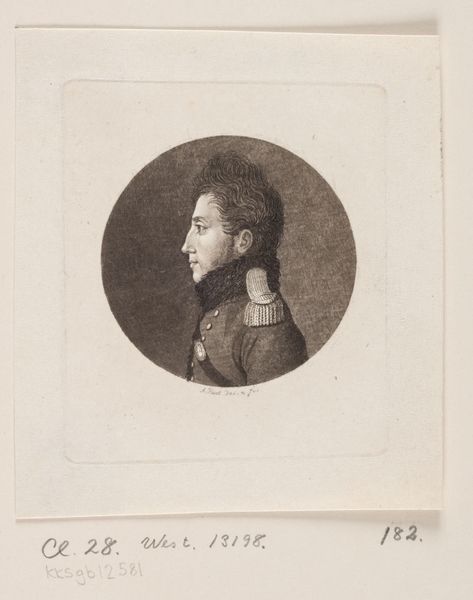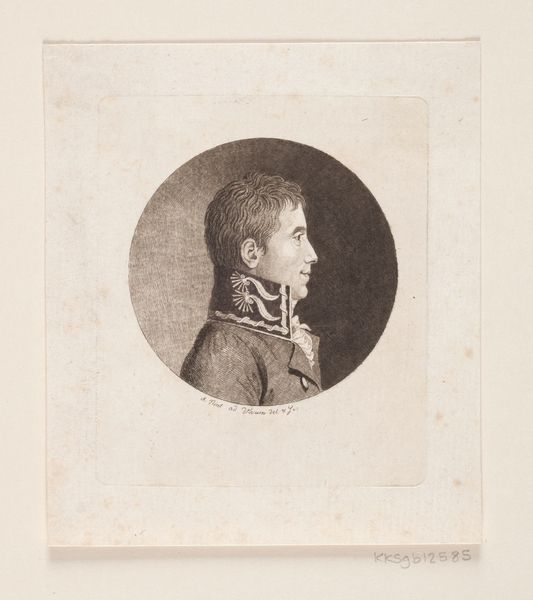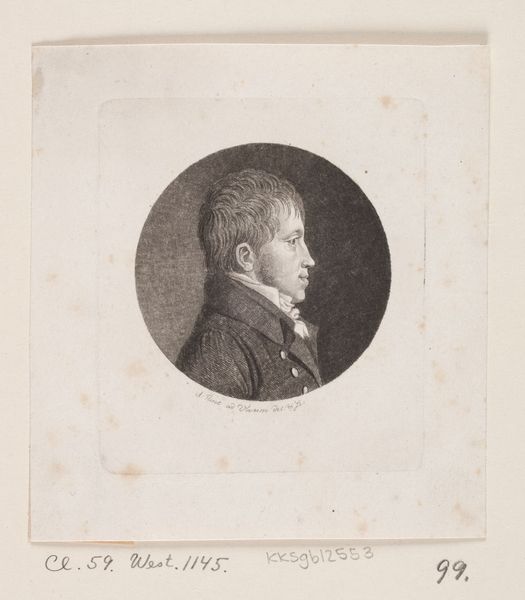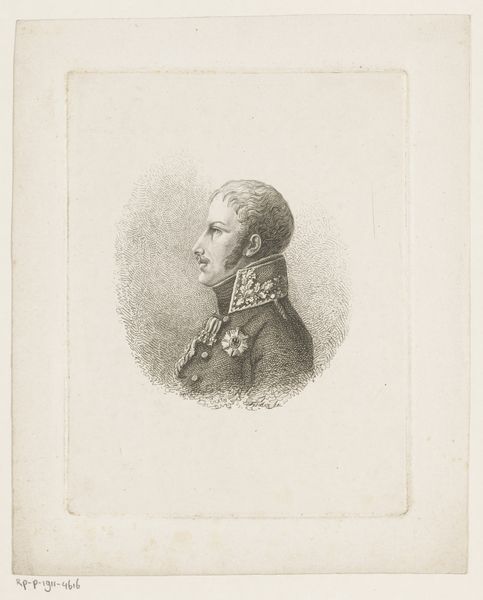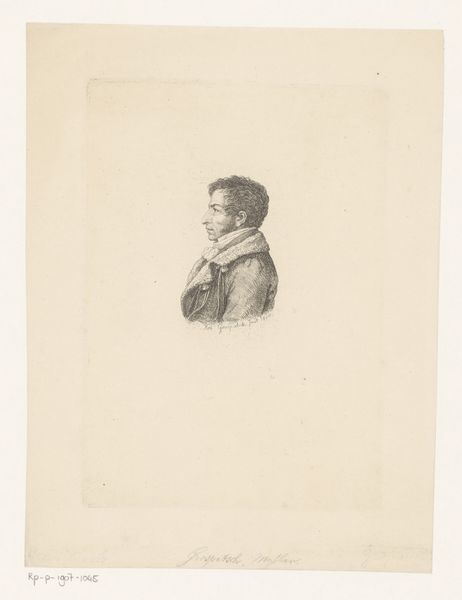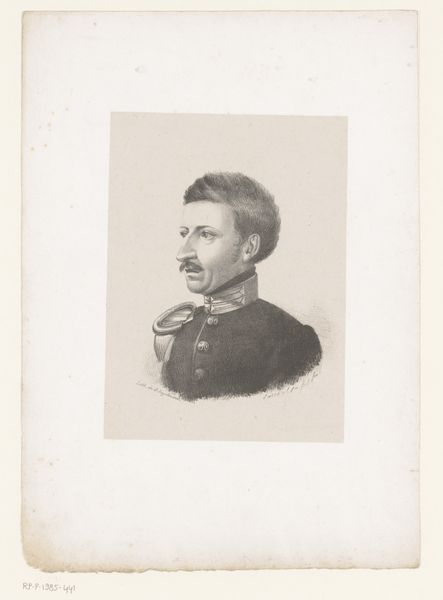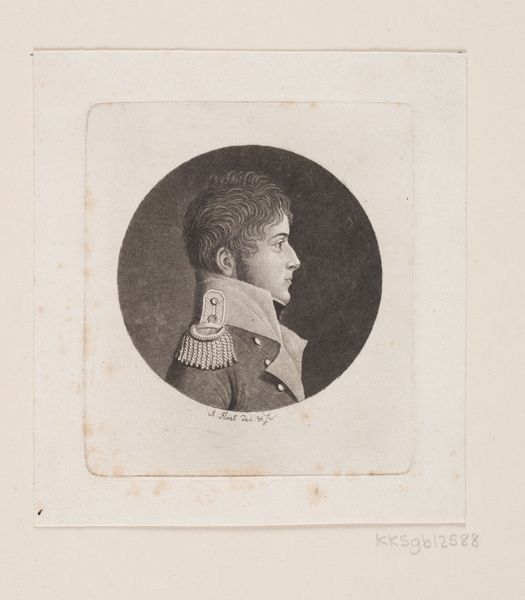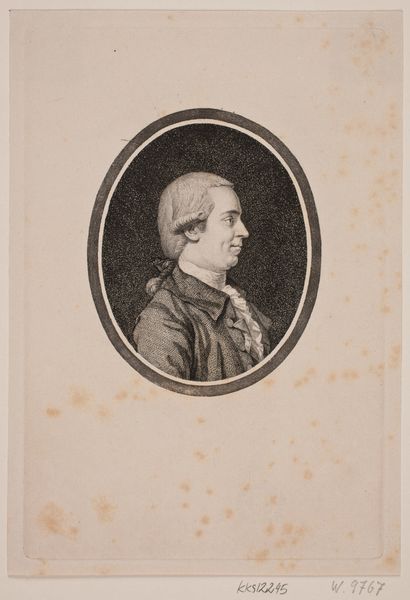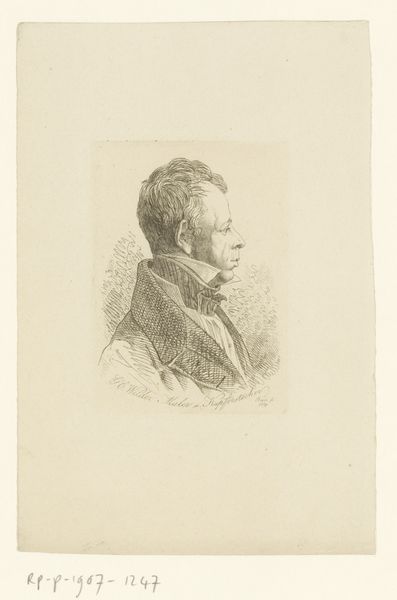
drawing, print, etching, pencil, engraving
#
portrait
#
drawing
#
neoclacissism
# print
#
etching
#
pencil
#
engraving
Dimensions: 63 mm (None) (billedmaal), 92 mm (height) x 82 mm (width) (plademaal)
Editor: This is "Unknown Man's Portrait" by Andreas Flint, created sometime between 1767 and 1824. It appears to be a print, maybe an etching or engraving, made with pencil. I'm struck by its classical formality, almost severe in its presentation. What layers of meaning might we unpack from this portrait? Curator: Indeed, this portrait resonates deeply with the era of neoclassicism, but let’s consider what that stylistic choice signifies. Beyond its aesthetic preferences, neoclassicism was strategically employed. Who, historically, were the patrons of such art, and what social orders or systems did they want to align themselves with? Editor: I see what you mean. It’s not just about clean lines and balance. The subject's military dress implies a connection to power and authority, probably elite status. Curator: Precisely. The uniform is key. Consider how the visual language of neoclassicism—order, rationality, and idealization— intersects with military structures and their inherent power dynamics. Do you think the subject’s “unknown” status challenges or reinforces these dynamics? Editor: I hadn't thought of it that way, but framing it as "unknown" almost elevates him to some kind of archetype, or symbol of authority, divorced from individuality. Would an earlier viewer recognize the symbols of class and/or power? Curator: Most likely. Think of portraiture at the time. Consider it almost always served to reinforce existing social hierarchies. What do you observe about the rendering that departs from life-like realism? Editor: It's interesting... It does appear very idealized, less focused on capturing an individual likeness and more concerned with portraying an idea of masculine virtue and civic duty. Something that would transcend his individuality. Curator: And that very act of idealization is inherently political. Editor: I'm seeing how the portrait and its classical style go beyond the surface and engage in a conversation about class, power, and societal values of the time. It really complicates what I initially perceived. Thank you. Curator: Absolutely! Context is key in our engagement with art. Keep that thought in mind when evaluating work through history and the modern day.
Comments
No comments
Be the first to comment and join the conversation on the ultimate creative platform.


